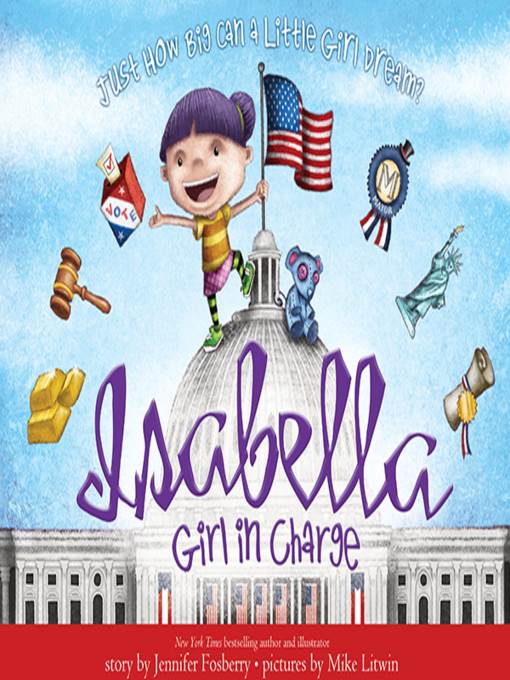
Isabella
Girl in Charge
فرمت کتاب
ebook
تاریخ انتشار
2016
Lexile Score
410
Reading Level
0-2
ATOS
1.7
Interest Level
K-3(LG)
نویسنده
Mike Litwinناشر
Sourcebooksشابک
9781492641742
کتاب های مرتبط
- اطلاعات
- نقد و بررسی
- دیدگاه کاربران
نقد و بررسی

October 24, 2016
The heroine of My Name Is Not Isabella highlights pioneering women in American politics. Once again, Isabella changes her name throughout, instructing her parents to call her Susanna (after Susanna Madora Salter, the first woman mayor), Jeannette (referring to congresswoman Jeannette Rankin), and Sandra (as in Day O’Connor), among other names. The personas let Litwin do some time traveling in his soft-textured digital illustrations as he pictures the purple-haired heroine inhabiting each role; the story concludes with Isabella witnessing the inauguration of a brown-skinned female president. Biographical background about each politico and a timeline of other female firsts round out a light introduction to women’s role in U.S. political history. Ages 4–8. Illustrator’s agent: Gwen Walters.

Isabella knows her women's history.The little white girl cannot contain her excitement for the day she's planned with her parents. "It's not time, Isabella," says her groggy mother at 6:00 a.m. "My name is not Isabella...I am SUSANNA, mayor of this here town," she responds, and an accompanying picture shows her in a dress with a sash reading "FIRST FEMALE MAYOR" across her chest. This establishes a pattern, with Isabella proclaiming herself Jeanette ("FIRST FEMALE IN CONGRESS"), Nellie ("FIRST FEMALE GOVERNOR"), Frances ("FIRST FEMALE CABINET MEMBER"), and Sandra ("FIRST FEMALE JUSTICE [on the] SUPREME COURT") while they prepare for their outing. The final spread shows them in a crowd at the U.S. capital watching the swearing-in of "MADAME PRESIDENT." The depiction of a woman of color as the fictional presidential character seems self-conscious, and her presence underscores the whiteness of the historical figures depicted earlier. A backmatter timeline under informational text about the white-women firsts does include diverse women's accomplishments, but it also simplistically highlights the 19th Amendment with the phrase: "women get the right to vote," erasing the experiences of systematically disenfranchised African-American and Native women. Litwin's blueline pencil and Photoshop illustrations include such stylistic tics as purple hair for both Isabella and her mother and frequent, gaping grins, detracting from the book as a whole. A well-meaning but uneven offering. (Picture book. 5-8) COPYRIGHT(1) Kirkus Reviews, ALL RIGHTS RESERVED.

























دیدگاه کاربران